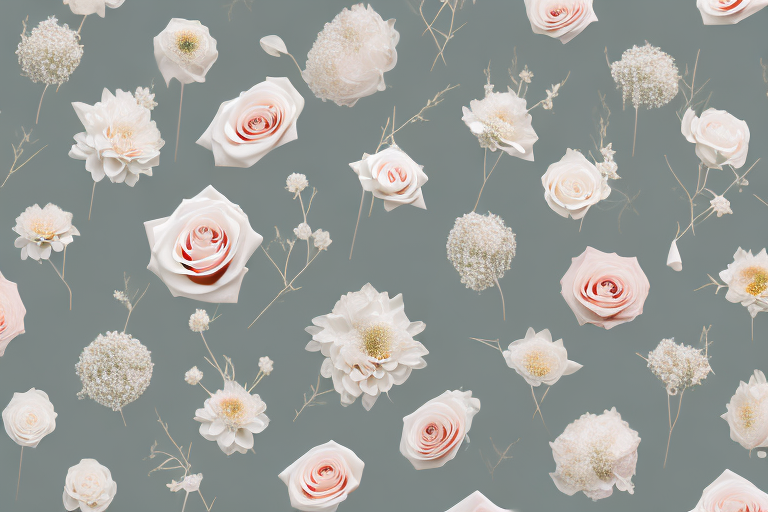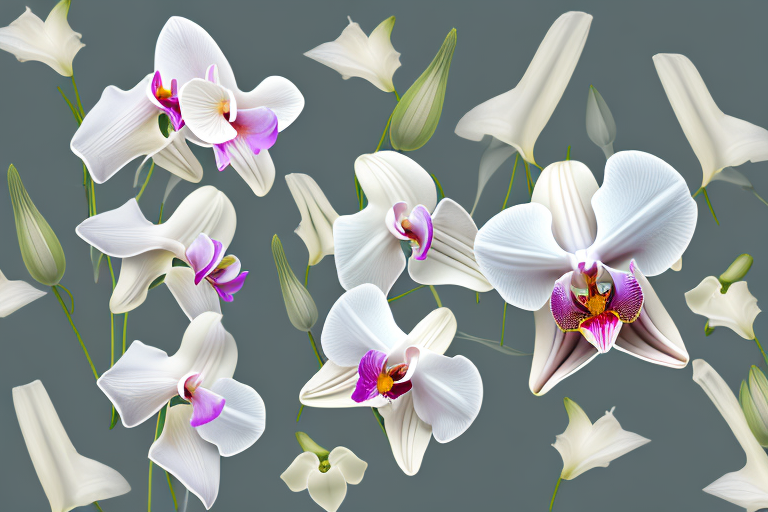Funeral flowers hold great symbolic significance, acting as a visual representation of love, respect, and remembrance for the departed. Understanding the meanings behind different floral arrangements can help convey heartfelt emotions during a time of mourning.
Understanding the Symbolism of Funeral Flowers
Funeral flowers have long been imbued with meaning, often referred to as the “language of flowers.” Each bloom and color selection holds its own symbolic representation, allowing those in mourning to express their emotions without words.
When it comes to selecting funeral flowers Sydney, it is important to understand the significance behind each choice. In Victorian times, specific flowers were assigned meanings, enabling individuals to send subtle messages through floral arrangements. This practice, known as floriography, allowed mourners to convey their sentiments through the language of flowers.
For example, lilies are commonly associated with purity and innocence, making them a popular choice for memorial services. Their elegant and serene appearance brings a sense of calmness to the atmosphere, providing solace to grieving hearts.
Roses, on the other hand, carry diverse meanings depending on their hue. Red roses symbolize love and respect, while white roses represent purity and innocence. These timeless blooms are often chosen to pay tribute to a loved one who has passed away, expressing deep emotions and everlasting love.

The Language of Flowers in Mourning
The language of flowers extends beyond individual blooms. The way flowers are arranged and combined can also convey specific messages. For instance, a bouquet of mixed flowers can symbolize the diverse range of emotions experienced during the grieving process.
Additionally, the choice of foliage and greenery can enhance the symbolism of funeral flowers. Ivy, for example, represents eternal life and remembrance, while ferns symbolize sincerity and humility. Including these elements in floral arrangements adds depth and meaning to the overall composition.
Understanding the language of flowers in mourning allows individuals to select arrangements that resonate with their emotions and convey their sentiments. It provides a way to express feelings that may be difficult to put into words, offering comfort and support to those grieving the loss of a loved one.
Cultural Significance of Funeral Flowers
Funeral flower traditions vary across cultures and religions, reflecting the diverse ways in which different societies honor and remember their departed loved ones.
In some Asian cultures, white or yellow chrysanthemums are commonly used in funeral arrangements. These flowers symbolize death and are believed to bring peace to the departed. The vibrant colors and delicate petals of chrysanthemums create a serene and tranquil atmosphere, allowing mourners to find solace in the midst of their grief.
On the other hand, in Hispanic cultures, red and coral-colored flowers are often used to honor the deceased. These vibrant hues symbolize the love and passion shared with the departed soul, celebrating their life and the impact they had on others. The bold and vibrant nature of these flowers reflects the lively and spirited nature of Hispanic funeral traditions.
Understanding these cultural nuances can help create funeral flower arrangements that honor the individual’s heritage and beliefs. By incorporating flowers and colors that hold significance in their culture, mourners can pay tribute to their loved ones in a way that is deeply meaningful and respectful.
The Artistic Process of Designing Funeral Flowers
Designing funeral flowers requires a delicate balance between aesthetics and symbolism. The floral arrangements should convey the emotions of the mourners while providing a visually stunning tribute to the departed.
Funeral flowers hold a significant role in honoring the life of the deceased and comforting those left behind. The artistry involved in creating these arrangements goes beyond mere decoration. It is a thoughtful process that aims to capture the essence of remembrance and celebrate the unique individuality of the departed.
Balancing Aesthetics and Symbolism
Creating a visually appealing arrangement that also holds deep symbolism is an art form. Skilled florists combine various blooms, colors, and textures to create stunning displays that capture the essence of remembrance. By striking the right balance, a floral arrangement can become a powerful representation of the deceased’s life and legacy.
Each flower used in the arrangement carries its own symbolism. Roses, for instance, are often associated with love and beauty, while lilies symbolize purity and innocence. By carefully selecting and arranging these flowers, florists can convey specific emotions and messages that resonate with the mourners.
Moreover, the choice of colors plays a crucial role in the overall impact of the arrangement. Vibrant hues can evoke feelings of joy and celebration, while softer tones create a sense of peace and tranquility. The skilled florist takes into account the preferences of the family and the personality of the departed to create a harmonious blend of colors that reflect their unique spirit.

Choosing the Right Flowers for the Occasion
When selecting funeral flowers, it is essential to consider the personality, interests, and favorite blooms of the departed. Incorporating their preferred flowers into the arrangement can create a personal touch and reflect their unique individuality.
For nature enthusiasts, incorporating wildflowers or native plants into the arrangement can pay homage to their love for the outdoors. If the departed had a favorite flower or a specific color they cherished, incorporating these elements can add a personal touch that resonates with the mourners.
Mourners may also want to consider the seasonality of flowers, as certain blooms may hold special significance during specific times of the year. For example, daffodils are commonly associated with spring and symbolize rebirth and new beginnings. Including these seasonal flowers can bring a sense of hope and renewal to the funeral service.
Additionally, some cultures and religions have specific flower traditions associated with funerals. For instance, in Asian cultures, white chrysanthemums are often used to symbolize grief and are commonly seen in funeral arrangements. Understanding these cultural nuances allows florists to create arrangements that respect and honor the traditions of the departed and their family.
The Emotional Impact of Funeral Flowers
Funeral flowers have an immense emotional impact on grieving individuals. They provide solace, comfort, and healing during a time of immense sorrow. The presence of floral arrangements at a funeral can create a serene and peaceful atmosphere, offering a sense of calm amidst the overwhelming emotions that accompany the loss of a loved one.
When mourners enter a funeral home or a place of worship adorned with beautiful flowers, they are instantly greeted by a visual representation of love, remembrance, and support. The vibrant colors and delicate fragrances of the flowers serve as a gentle reminder that life, although transient, is also filled with beauty and moments worth cherishing.
Conveying Love and Remembrance through Floral Design
Funeral flowers offer a tangible way to express love and remembrance for the departed. The sight of a beautifully arranged floral tribute can bring solace to mourners, reminding them of the love and memories shared with the deceased. Each flower, carefully selected and arranged, carries a unique symbolism that adds depth and meaning to the funeral service.
For instance, lilies are often chosen for their association with purity and the innocence of the soul. Roses, with their timeless beauty, symbolize love and respect. Carnations, known for their long-lasting blooms, represent admiration and affection. By selecting specific flowers and arranging them thoughtfully, mourners can create a personalized tribute that reflects the personality and essence of the person they have lost.

The Healing Power of Funeral Flowers
Studies have shown that flowers have a positive impact on mental well-being. In times of grief, funeral flowers can provide solace and healing, helping individuals find comfort and peace amidst their sorrow. The act of receiving flowers during a funeral can evoke a sense of support and empathy, reminding mourners that they are not alone in their grief.
Moreover, the presence of flowers can stimulate the release of endorphins in the brain, promoting feelings of happiness and reducing stress. The vibrant colors and natural beauty of the flowers can uplift the spirits of mourners, even if momentarily, providing a respite from the heaviness of grief.
Additionally, funeral flowers can serve as a lasting reminder of the love and support received during a difficult time. After the funeral service, mourners often take home floral arrangements, allowing them to continue experiencing the emotional benefits of the flowers in the privacy of their own space. These flowers become a tangible symbol of the love and care that surround them, offering a source of comfort as they navigate the grieving process.
Tips for Designing Heartfelt Funeral Flowers
Designing funeral flowers is an opportunity to create a lasting tribute to the departed soul. By incorporating personal touches and thoughtfulness, mourners can design floral arrangements that not only honor their loved ones but also provide a source of comfort.
When it comes to personalizing funeral flowers, the possibilities are endless. Adding personal touches, such as incorporating favorite flowers, objects, or photographs, can make a floral arrangement deeply meaningful. Imagine a bouquet adorned with the deceased’s favorite roses, or a wreath adorned with small trinkets that held special significance to their life. These customized designs not only serve as a tribute to the deceased but also offer comfort and solace to grieving family members and friends.
Creating a lasting tribute with funeral flowers is another aspect to consider. While fresh flowers are beautiful, they eventually wither away. To ensure that the memory of your loved one lives on, consider designing funeral flowers that can be repurposed or preserved after the service. For example, dried flowers can be framed, creating a lasting tribute that can be displayed in the home. This serves as a comforting reminder of the loved one’s presence and enduring impact on their lives.
The art of designing funeral flowers goes beyond mere aesthetics. It involves understanding and harnessing the symbolic power of each bloom, selecting the right flowers for the occasion, and creating arrangements that convey love and remembrance. Each flower has its own significance, and by carefully selecting the right ones, you can create a meaningful arrangement that speaks volumes. Whether it’s the purity of white lilies representing innocence or the deep red roses symbolizing love and respect, each flower has a story to tell.
When it comes to the arrangement itself, the possibilities are endless. From traditional wreaths and sprays to more unique designs like heart-shaped tributes or personalized casket sprays, the choice is yours. The key is to create an arrangement that truly captures the essence of your loved one and the emotions you wish to convey.
Funeral flowers are not just a decorative element; they hold a deeper meaning. They bring comfort, healing, and solace to those who mourn, symbolizing the enduring connection between the living and the departed. By putting thought and care into the design of funeral flowers, you can create a tribute that not only honors the memory of your loved one but also provides a source of comfort and healing to all those who gather to pay their respects.
Related: The Language of Sympathy Expressed through Funeral Flowers

